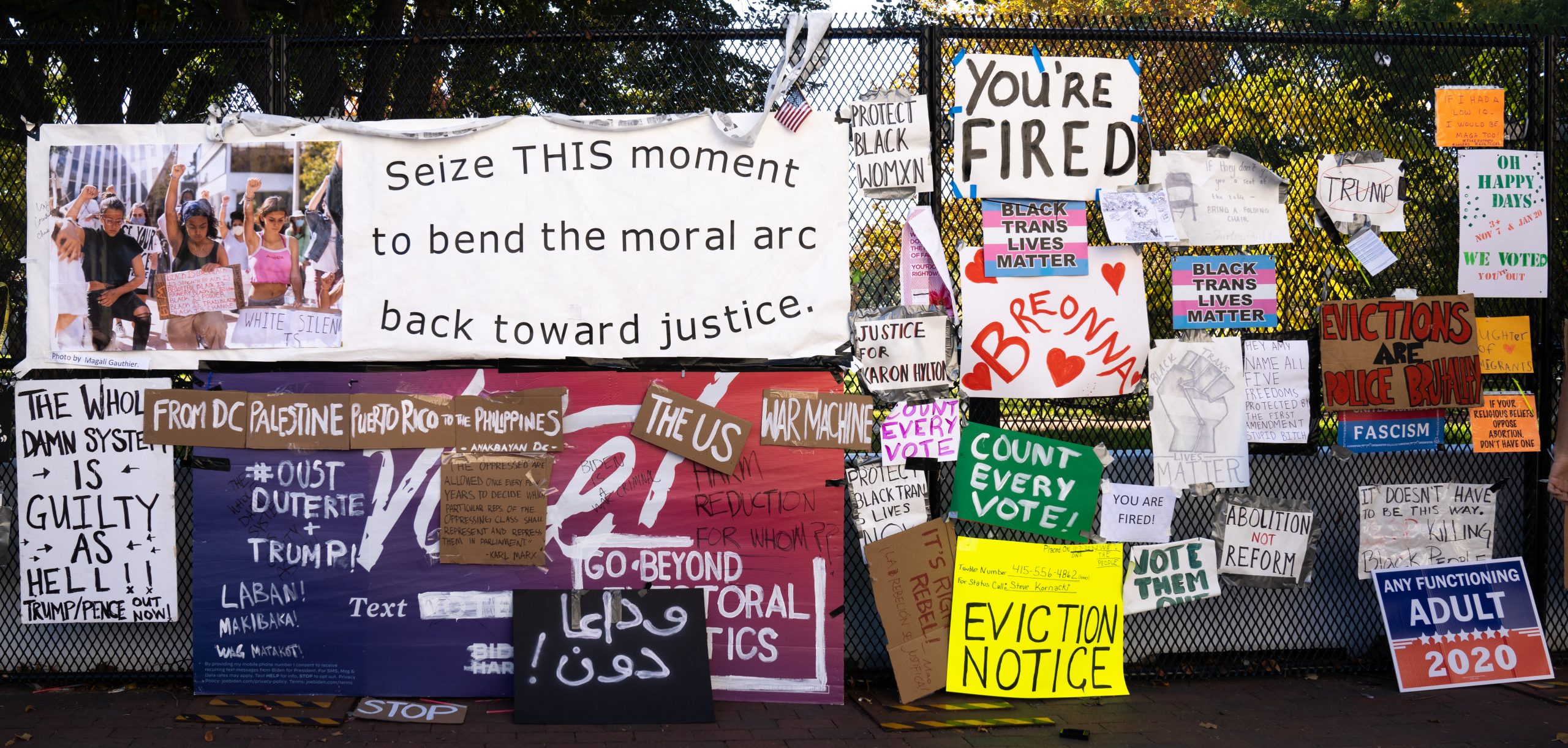
The American electoral college system, which determines who the president will be every four years, has a history of racism and bias that persists today. Racism still influences American politics as African American voters, and other minority voters, are disenfranchised, living in states that are less competitive and therefore less focused on. The system once again shaped American politics on November 3rd, the United States Election Day. Though elections are traditionally thought of as giving each person one vote, the electoral college follows a very different set of guidelines.
The Structure of the Electoral College System
The electoral college, which has existed since America’s founding, allots each state a number of electoral votes. From there, all of a state’s electoral votes go to the presidential candidate who won the popular vote in that state.
Each state’s number of electoral votes is the sum of its representatives in the two branches of Congress: the Senate, in which each state has two representatives, and the House of Representatives, in which each state has a proportional number of representatives. This system may not seem inherently flawed, but aspects of it disproportionately subvert African American voters.
The Origin of the Electoral College System
The system was originally devised in conjunction with the Three-Fifths Compromise, which counted each slave as three-fifths of a person when determining the number of congressional representatives a state had although slaves could not vote. This was racist not only because it referred to enslaved people as less than a full person, but also because it gave racist white southern voters proportionately more influence in the electoral system.
Racism in the Electoral College Post-Slavery
Despite the abolishment of slavery in 1865, African American voters continue to be disenfranchised. It was popular for government officials to create laws making it difficult for African American citizens to become eligible voters, such as forcing voters to take written literacy tests and pay poll taxes. The state has the same number of electoral votes regardless of voter turnout, so African American voter disenfranchisement meant that those white voters who did cast ballots had more influence on which candidate the state’s electoral votes went to.
The Voting Rights Act of 1965 placed regulations on state authorities in an attempt to prevent such voter suppression. However, the United States Supreme Court decision Shelby v. Holder (2013) promptly removed such regulations and removed the legal protection of black voters. Therefore, while disenfranchisement is markedly less official/legal than it was in the 1960s, it still exists.
Racism in the Electoral College Today
Despite efforts to combat voter suppression, there is still significant African American voter disenfranchisement in the United States.
First, the fact of where African Americans tend to live gives them less voting power. As of 2010 (when the last census was taken), California’s black population made up 6.5% of the total population while Wyoming’s black population had a mere 1.3%. Whereas California, the more populous state, has one electoral vote per 712,000 voters, Wyoming, the least populous state, has one electoral vote per 195,000 voters.
In addition, states with large African American populations tend to favor Democrats, referred to as “solidly blue” states (states that tend to favor Republicans are “solid red” states). Since these states are unlikely to change from election to election, Republican and Democrat candidates both focus their efforts towards “swing states” whose voters often switch from Democrat to Republican.
The difference between 2012, when Democrat Barack Obama won re-election, and 2016, when Republican Donald Trump won his first term, was voters in several counties in Michigan (sixteen votes), Pennsylvania (twenty votes), and Wisconsin (ten votes). The demographics of these areas are white, working-class, and non-college-educated. Due to the structure of the system, it makes sense for candidates to focus on winning the support of the undecided voters in these swing states.
The electoral college has altered the results of elections twice: in 2000 and 2016. Al Gore and Hillary Clinton, both of whom were Democrats, won the popular vote but lost the electoral college system. Both candidates had a resounding amount of African American support. Al Gore won 90% of African American votes, while Hillary Clinton won 89% of African American voters.
Therefore, due to the fact of where African Americans live and whom they tend to vote for, it makes less sense to target African American voters because, as a whole, they are less likely to change the outcome of elections than the white, working-class, and non-college-educated voters in swing states.
Future Implications of the Electoral College
To abolish the system, it would require a constitutional amendment. Three-fourths of state legislatures and two-thirds of each of the House of Representatives and Senate would have to approve it. Though modifying the system of elections would help address the systemic issues, it is unlikely to happen.
Many small states benefit from this system by getting proportionally more electoral votes. Therefore, it is unrealistic that their representatives would approve a system that gives their constituents less power. In addition, the elected officials who would be voting are likely to be part of the political party in power, which gives them even less incentive to upset the status quo.
In the 2020 Presidential election, incumbent President Donald Trump lost both the popular vote and the electoral vote. Biden’s efforts to win the support of non-college-educated white voters in swing states also increased his African American support base in those same states. However, this is just one election, and time will tell how these systemic issues will impact the outcome of future elections.
Edited by Kate Miller.
The opinions expressed in this article are solely those of the author and they do not reflect the position of the McGill Journal of Political Studies or the Political Science Students’ Association.
Featured image by Alex Coco and obtained via Creative Commons under a CC BY-SA 2.0 license.